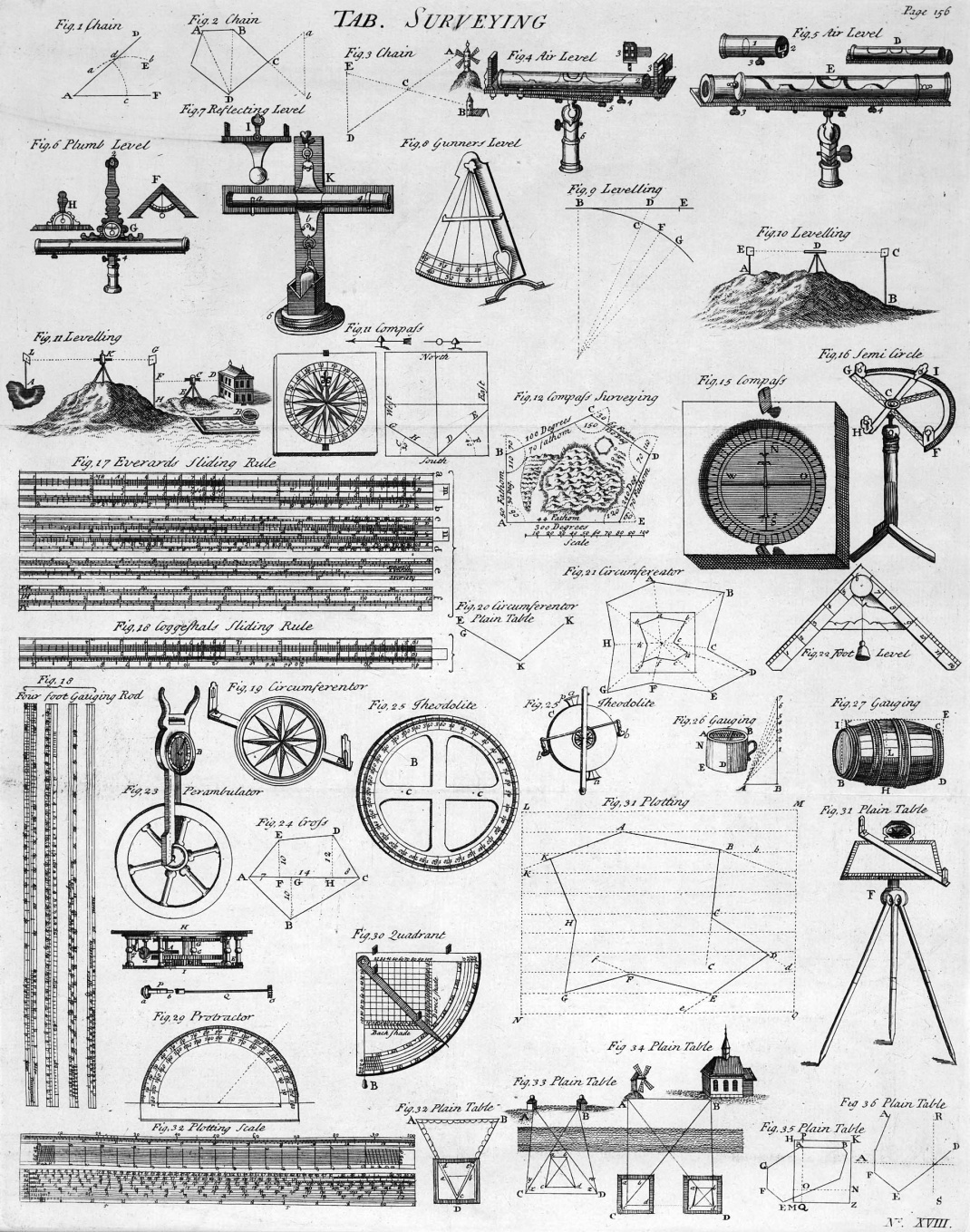History of surveying.
The history of surveying dates back to ancient times, with a recorded land register in Egypt in 3000BC, and re-establishment of farm boundaries following floods of the Nile River and construction of the Great Pyramid of Giza recorded about the same time.
Under the Romans, land surveying was established as a profession and land surveyors established the basic measurements under which the Roman Empire was divided, such as a tax register of conquered lands (300AD).
Biblical references to land boundaries and landmarks can be found in: Deuteronomy 19.14 and 27.17; Proverbs 22.28 and 23.10; and Job 24.2
In eighteenth century Europe, a method of surveying known as triangulation, which relied on the measurement of angles, was used to build a hierarchy of networks to allow point positioning within a country.

Cyclopedia: historical surveying instruments
In the early days of British colonisation of Australia and New Zealand "much of the survey work undertaken to open up the country and provide land holdings to settlers was carried out using Gunter’s chains, measuring wheels, circumferenter, Kater’s compass and even pacing where approximation sufficed … so long as the corners of the land were clearly staked and marked by the surveyor, the accuracies of measurement and direction were left to chance" (Hallmann 1994, 2.3)
Over time, Gunter’s chain was replaced by steel bands and invar tapes, and later by Electromagnetic Distance Measurement (EDM) equipment, and subsequently Global Positioning System (GPS) devices, each in turn capable of improved efficiency and greater accuracies of measurement than the preceding forms. Likewise, compasses were replaced by transits, later theodolites and then Total Stations, which combined angular and distance measurement in a single survey instrument.
In all of these situations, the status of measurements of preceding times was subject to alternative forms of evidence of ‘what the land boundary was intended to be, and where it was intended to be located’: measurements and mathematics alone do not provide the correct answers!
Comments
Post a Comment